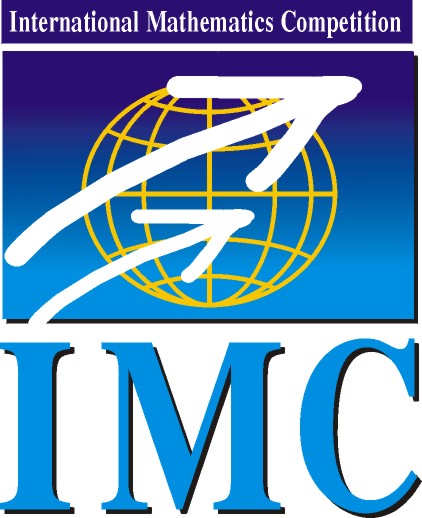
|
International Mathematics Competition
|
IMC 2026 |
| Information | Results | Problems & Solutions | Photos |
IMC2018: Day 2, Problem 10
Problem 10. For \(\displaystyle R>1\) let \(\displaystyle \mathcal{D}_R = \{(a,b)\in\mathbb{Z}^2 \colon 0<a^2+b^2<R\}\). Compute
\(\displaystyle \lim_{R\rightarrow \infty} \sum_{(a,b) \in \mathcal{D}_R} \frac{(-1)^{a+b}}{a^2+b^2}.\)
(Proposed by Rodrigo Angelo, Princeton University and Matheus Secco, PUC, Rio de Janeiro)
Solution. Define \(\displaystyle \mathcal{E}_R = \{(a,b) \in \mathbb{Z}^2 \setminus \{(0,0)\} : a^2+b^2<R\ \text{ and } a + b \text{ is even} \}\). Then
\(\displaystyle \sum_{(a,b) \in \mathcal{D}_R} \frac{(-1)^{a+b}}{a^2+b^2} = 2 \sum_{(a,b) \in \mathcal{E}_R}\frac{1}{a^2+b^2} - \sum_{(a,b) \in \mathcal{D}_R} \frac{1}{a^2+b^2}. \tag5 \)
But \(\displaystyle a+b\) is even if and only if one can write \(\displaystyle (a,b) = (m-n, m+n)\), and such \(\displaystyle m,n\) are unique. Notice also that \(\displaystyle a^2+b^2 = (m-n)^2+(m+n)^2 = 2m^2+2n^2\), hence \(\displaystyle a^2+b^2 < R\) if and only if \(\displaystyle m^2+n^2<R/2\). With that we get:
\(\displaystyle 2\sum_{(a,b) \in \mathcal{E}_R}\frac{1}{a^2+b^2} = 2\sum_{(m,n) \in D_{R/2}}\frac{1}{(m-n)^2+(m+n)^2} = \sum_{(m,n) \in D_{R/2}}\frac{1}{m^2+n^2}. \tag6 \)
Replacing (6) in (5), we obtain
\(\displaystyle \sum_{(a,b) \in \mathcal{D}_R} \frac{(-1)^{a+b}}{a^2+b^2} = - \sum_{R/2 \le a^2+b^2 < R} \frac{1}{a^2+b^2}, \)
where the second sum is evaluated for \(\displaystyle a\) and \(\displaystyle b\) integers.
Denote by \(\displaystyle N(r)\) the number of lattice points in the open disk \(\displaystyle x^2+y^2<r^2\). Along the circle with radius \(\displaystyle r\) with \(\displaystyle \sqrt{R/2}\le r<\sqrt{R}\), there are \(\displaystyle N(r+0)-N(r-0)\) lattice points; each of them contribute \(\displaystyle \frac1{r^2}\) in the sum (7). So we can re-write the sum as a Stieltjes integral:
\(\displaystyle \sum_{R/2 \le a^2+b^2 < R} \frac{1}{a^2+b^2} = \int_{\sqrt{R/2}}^{\sqrt{R}} \frac{1}{r^2} \,\mathrm{d}N(r). \)
It is well-known that \(\displaystyle N(r)=\pi r^2+O(r)\). (Putting a unit square around each lattice point, these squares cover the disk with radius \(\displaystyle r-1\) and lie inside the disk with radius \(\displaystyle r+1\), so there their total area is between \(\displaystyle \pi(r-1)^2\) and \(\displaystyle \pi(r+1)^2\)). By integrating by parts,
\(\displaystyle \begin{align*} \int_{\sqrt{R/2}}^{\sqrt{R}} \frac{1}{r^2} \,\mathrm{d}N(r) &= \left[\frac1{r^2}N(r)\right]_{\sqrt{R/2}}^{\sqrt{R}} + \int_{\sqrt{R/2}}^{\sqrt{R}} \frac{2}{r^3}N(r) \,\mathrm{d}r \\ &= \left[\frac{\pi r^2+O(r)}{r^2}\right]_{\sqrt{R/2}}^{\sqrt{R}} + 2\int_{\sqrt{R/2}}^{\sqrt{R}} \frac{\pi r^2+O(r)}{r^3} \,\mathrm{d}r \\ &= 2\pi \int_{\sqrt{R/2}}^{\sqrt{R}} \frac{\mathrm{d}r}{r} + O\Big(1/\sqrt{R}\Big) = \pi \log 2 + O\Big(1/\sqrt{R}\Big). \end{align*} \)
Therefore,
\(\displaystyle \lim_{R\rightarrow \infty} \sum_{(a,b) \in \mathcal{D}_R} \frac{(-1)^{a+b}}{a^2+b^2} = -\lim_{R\rightarrow \infty} \sum_{R/2 \le a^2+b^2 < R} \frac{1}{a^2+b^2} = -\lim_{R\rightarrow \infty} \int_{\sqrt{R/2}}^{\sqrt{R}} \frac{1}{r^2} \,\mathrm{d}N(r) = -\pi \log 2. \)
© IMC